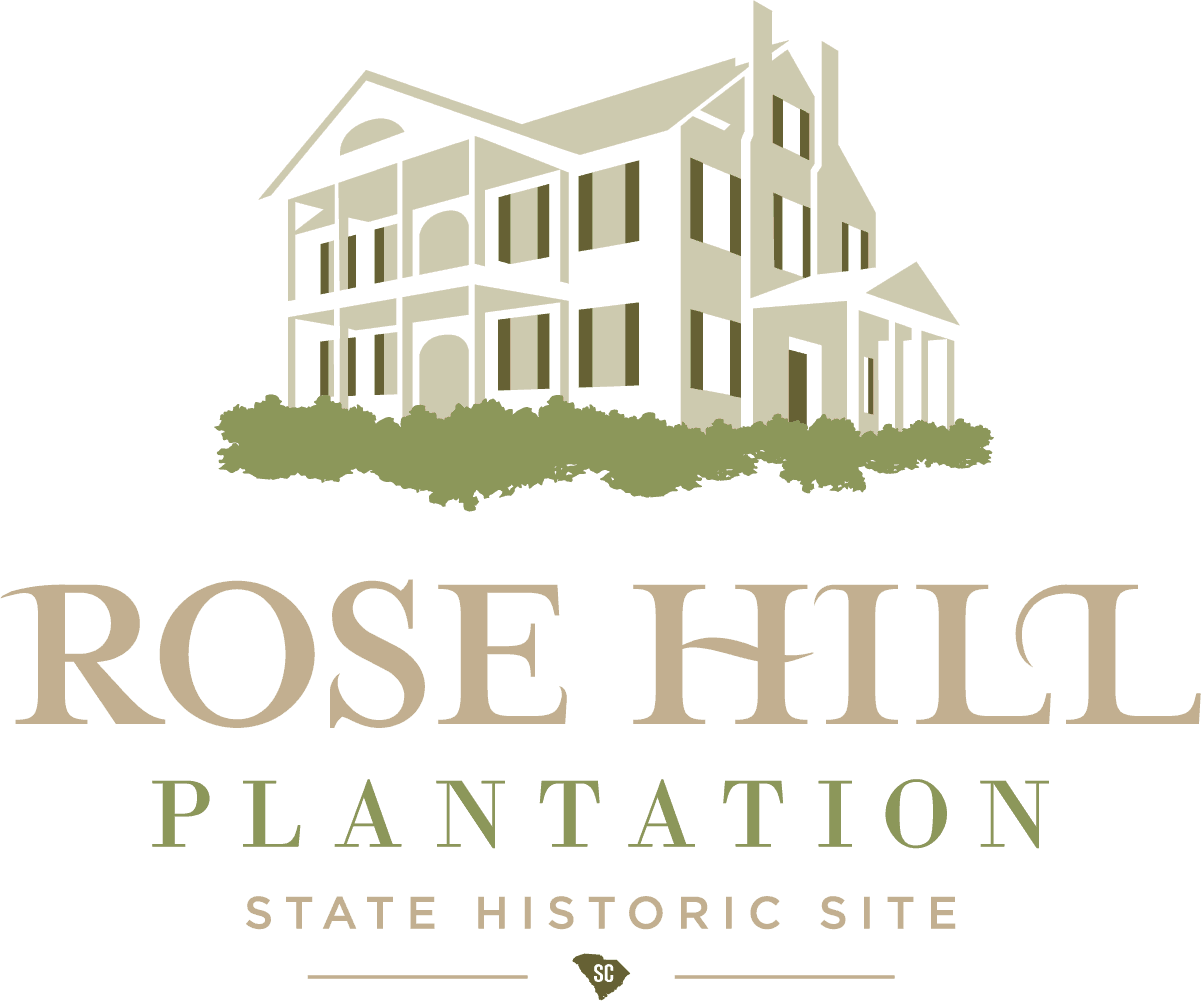Trees are an important part of the landscape at Rose Hill Plantation. Today, they cover most of the 2,000 acres that made up the plantation, including areas once cleared for agricultural fields and development. Trees can tell us about this place’s history when we ask questions like:
- Who planted this tree?
- Did it grow here naturally?
- How did the people who lived on this plantation – both enslaved and free – use this species?
- How old is this tree?
- Is this tree located on a former field or near an old road or building?
Dr. Tom Crosby, a biology professor emeritus from Morgan State University who grew up in Union County, has helped identify trees and plants at the site. This page lists what trees and plants we have identified so far, as well as information on why they might be here.
WINGED ELM (CORK OR “WAHOO” ELM)
(Ulmus alata)
Height 40-80 ft.
Thin, corky growth (called “wings”) on branches. Grows in abandoned fields. Bark used for rope to tie cotton bales.
BLACK WALNUT
(Juglans nigra)
Height 70 ft.
Aromatic leaves. Edible nuts. Wood highly valued for furniture. Enslaved people and sharecroppers may have used walnut husks to dye cloth.
AMERICAN SYCAMORE
(Platanus occidentalis)
Height 60-100 ft.
One of the tallest eastern hardwoods. Grows in wet soils near water. Identified by large fan-shaped leaves and smooth white areas on upper trunk and branches.
MOCKERNUT HICKORY
(Carya tomentosa)
Height 50-80 ft.
Aromatic leaves that turn bright yellow in fall. Edible nuts. Petioles and leaves are pubescent (tomentose). Wood used by enslaved people and sharecroppers for smoking and barbecuing meats, especially pork.
COMMON PERSIMMON
(Diospyros virginiana)
Height 60 ft.
Edible orange-red fruit. A dioecious species with male and female flowers growing on separate trees. Wood used for textile mill spindles, shuttles, and golf-club heads.
BLACK CHERRY
(Prunus serotina)
Height 80 ft.
Dark, scaly bark. Grows purple cherries in summer, possibly used by enslaved people and sharecroppers for cough medicine, wine, or cloth dye.
POST OAK
(Quercus stellata)
Height 30-70 ft.
Leaves resemble Maltese cross. Wood is heavy, hard, and rot-resistant. Used for railroad cross-ties and fence posts.
YELLOW POPLAR (TULIP POPLAR OR TULIP TREE)
(Liriodendron tulipifera)
Height 80 ft.
One of the tallest trees in this region. Flowers in spring resemble garden tulips. In fall, leaves are among the first to turn yellow in this region.
EASTERN REDBUD (or Judas TREE)
(Cercis canadensis)
Height 40 ft.
Broad, heart-shaped leaves. Pinkish-lavender flowers sprout from tree branches in early spring before leaves appear. Flowers can be eaten as a salad or fried.
SOUTHERN RED OAK
(Quercus falcata)
Height 50-80 ft.
Leaves have a bell-shaped base with sharply pointed tips. High-grade wood used for furniture, flooring, and veneer. Acorns eaten by wildlife.
WHITE OAK
(Quercus alba)
Height 80-100 ft.
Light-gray bark that appears loose. High-grade hardwood used for barrels, baskets, and chair-seats. Likely used by enslaved people and sharecroppers for firewood and cooking.
FLOWERING DOGWOOD
(Cornus florida)
Height 30 ft.
White flowers in spring. Limbs used historically as yard rake or “brush broom” by some southern African Americans to sweep yards.
EASTERN RED CEDAR
(Juniperus virginiana)
Height 40-60 ft.
Flat, scale-like and erect, awl-like leaves. Light reddish-brown bark that peels in strips. Aromatic wood used for pencils and fence posts. Commonly used in Christmas decorations.
AMERICAN BEECH
(Fagus grandifolia)
Height 60-80 ft.
Light gray trunk with smooth bark. Leaves have straight parallel veins and turn beige in fall/winter, remaining on tree until spring. Grows in moist soils.
PARTRIDGEBERRY
(Mitchella repens)
Non-climbing, creeping vine. Shiny evergreen leaves with a pale-yellow center line. Wildlife eat bright red berries. Common names include Two-Eyed Berry and Running Fox.
“FATWOOD”
Hard, yellowish, resinous wood derived from the heartwood of a pine tree. Ignites easily. Likely used by enslaved people and sharecroppers to start fires. Also called “lighter wood” or “lighter’d.”
SOUTHERN MAGNOLIA
(Magnolia grandiflora)
Height 60-80 ft.
Very fragrant flowers. Wood used for making crates, boxes, flooring, and doors. Evergreen leaves used in decorations.
AMERICAN HOLLY
(Ilex opaca)
Height 40 ft.
Evergreen leaves. Red berries eaten by wildlife. Foliage used in decorations. Wood used in cabinetry, handles, carvings, and rulers.
PECAN TREE
(Carya illinoinensis)
Height 100+ ft.
Edible nuts and desirable wood. First successful commercial technique for propagation developed in mid-1800s by Antoine, an enslaved man in Louisiana.
RED MAPLE (SCARLET MAPLE, SWAMP MAPLE)
(Acer rubrum)
Height 60-90 ft.
Leaves turn bright yellowish-orange and red in fall. Bark extract used for by early colonists to make ink, cinnamon-brown, and black dyes.
HACKBERRY
(Celtis occidentalis)
Height 70 ft.
Light brown and silvery bark with corky, wart-like features. Dark, sweet seeds. Also known as sugarberry and bearwood.
LOBLOLLY PINE
(Pinus taeda)
Height 80-100 ft.
Deeply furrowed bark. Fast growing, often on abandoned farmland. Cultivated widely today for pulpwood and lumber.
SHORTLEAF PINE
(Pinus glabra)
Height 70-100 ft.
Flat, scaly-plated bark. Grows easily in varied habitats, including old fields. Cultivated widely today for pulpwood and lumber.













